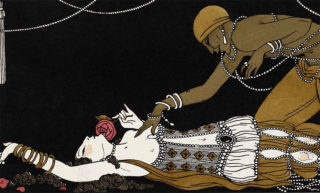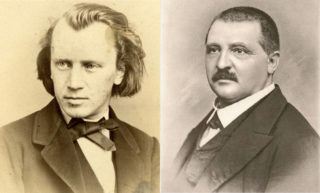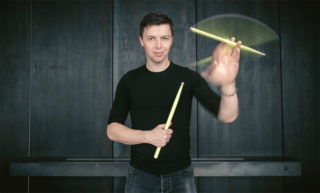Electronics
Sinfonieorchester Basel
30 August 2017
Michal Nesterowicz - Conductor
Cameron Carpenter - Organ
Edgard Varèse - Intégrales
Sergei Rachmaninov - Rhapsody on a theme by Paganini
Ottorini Respighi - Fontane di Roma
Ottorini Respighi - Pini di Roma
The Sinfonieorchester Basel opens the season in full force. Most of the pieces tonight require a large number of musicians, an ideal program for the audience to see and hear most of the orchestra’s instrumentalists.
Apart from being contemporaries (Varèse 1883-1965, Rachmaninov 1873–1943 and Respighi 1879–1936), and all compositions being from the Interbellum, what else holds the program together?
The central piece of the program is Rachmaninov’s Rhapsody on a theme by Paganini, composed in Switzerland in 1934. Originally for piano, the solo part tonight will be played on the International Travelling Organ. While studying, Cameron Carpenter, the organist, realised an organist never has his own instrument as violinists or flautists do. Hence he commissioned a new, transportable, electronic instrument with which he travels to his concerts. The instrument offers endless possibilities, which Carpenter, who arranged the piece for organ, will demonstrate tonight.
The opening piece is Varèse’s Intégrales (1924). Varèse dreamt of generating new sounds using electronic instruments or a sound machine with which he could project sound in any desired space in the hall. Intégrales, although written for traditional instruments (wind instruments and percussion only), was conceived as such a spatial projection in which musical themes move in different planes and at different speeds in relation to each other. To understand this concept we refer to Varèse’s note in the score saying that a solo by the oboe (plane 1) should be accompanied by a homogenous and balanced quartet of clarinet, horn, trumpet and trombone (plane 2). In 1958 Varèse finally had the means (using hundreds of amplifiers and loudspeakers) to create “sound masses” that reached the listener from different places and along different routes. Intégrales was at the start of this creative process.
All soloists in the orchestra have a chance to show off their talents in Fontane di Roma (1916) and Pini di Roma (1924), two of Resphigi’s most beloved pieces, depicting the fountains and the pine trees of the eternal city at different times of the day. Both works consist of four movements, each giving an auditory rendition of a tree or fountain in a different location. The Fontane goes chronologically from dawn (pastoral), morning (joyful nymphs and tritons) and noon (Neptune’s chariot triumphantly being drawn over the water) to sunset (melancholic). The Pini follows a less clear pattern. The first movement (sunny morning, children playing) contrasts strongly with the second (meditative, pines at a catacomb). In the third part (a nocturne) a recorded song of a nightingale features in the score. When the sun rises, we can finally hear Roman soldiers marching along the Appian Way.
One of the red threads running through the program is the use of electronic sound. As an interesting contrast, you will hear how Carpenter, in the 21st century, uses modern techniques to recreate traditional sound, whereas Varèse, a century earlier, wanted to use electronics to create new sounds. In the end it was Resphigi who was the first to use recorded, electronic sound in his Pini.
These English Program Notes have been published in the magazine of the Sinfonieorchester Basel (No.1, 2017/2018)








Comments